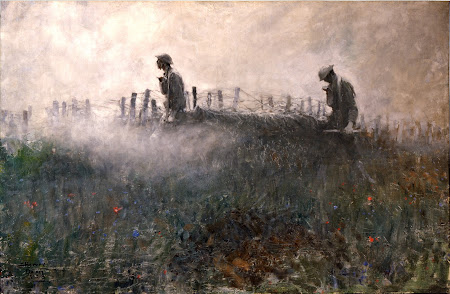Classical Art Exhibit
 |
| Marie Antoinette being taken to her Execution, October 16, 1793 by William Hamilton 1794 This painting stuck out to me due to the contrast between the soldiers and crowd surrounding the bright white angelic look of Marie Antoinette as she is led to her death. Knowing the history and that Marie is on her way to be executed with the crowd attempting to break through the soldier gives me a sobering feeling of dread when viewing this particular painting. I would own a print of this painting because of the history and the details that are depicted within the piece. As far as the presentation of the artwork goes, it definitely allows for someone to understand the struggle that was occurring during the French Revolution when Marie was killed meaning that a museum presenting information about the French Revolution would be an excellent place to present this piece. Marie Antoinette was executed during the French Revolution on October 16, 1793 and Hamilton does an excellent job of depicting the angry crowd that despised her due to her frivolous spending habits while the rest of the country was starving in a financial crisis. It is interesting how Hamilton seems to make her seem angelic and innocent of her crimes when it comes to her execution due to the light that seems to be emanating from her. The painting is an accurate representation of the turmoil that was occurring in France at the time and the struggle between the aristocrats and royalty versus the angry people who were suffering due to their careless spending habits. |
 |
| The death of General Warren at the Battle of Bunker's Hill, 17 June, 1775 by John Trumbull |



Hey Juliana, this is a very good blog that explains so much detail about classical art! In the Marie Antoinette being taken to her Execution, the lighting portrayed in this piece of art is truly magical. We see a very dark message being revealed about the woman dying shortly but it feels like everything is stuck in time and the light influences the importance of this special moment. I see a theme of sadness and rush in this artwork, the woman is looking up with a very grim look on her face as the soldiers are scurrying around trying to force this woman to walk to her death, a very powerful image. This artwork also shows how rebellious the crowd is, not being happy at all with Antoinette deaths which makes this scene even more emotionally charged.
ReplyDelete